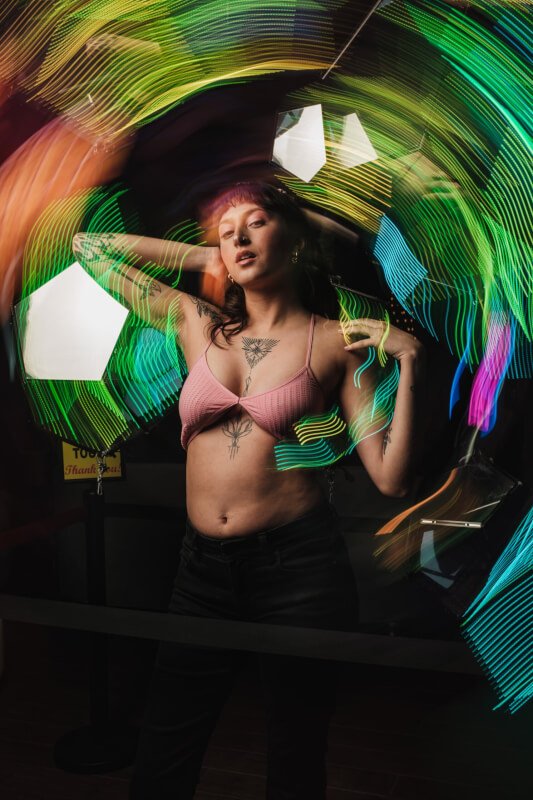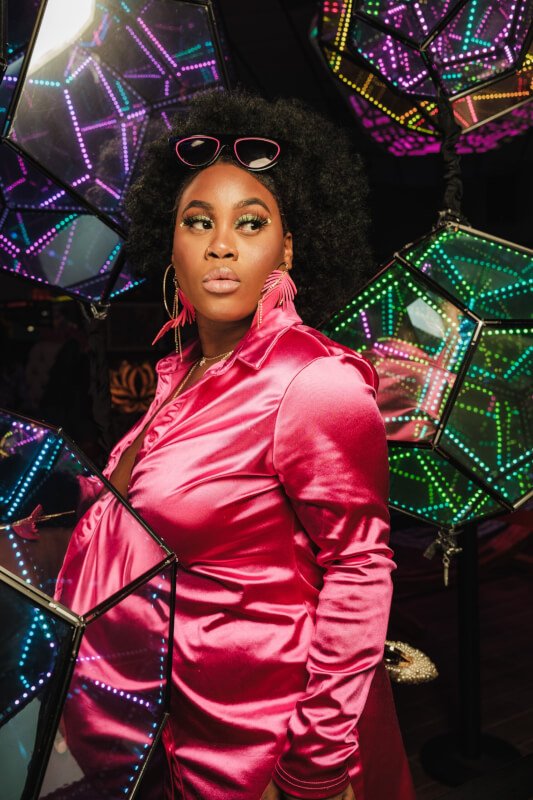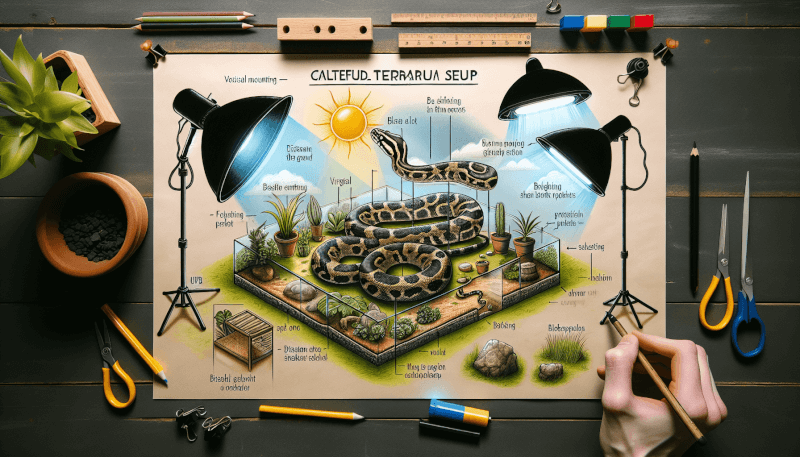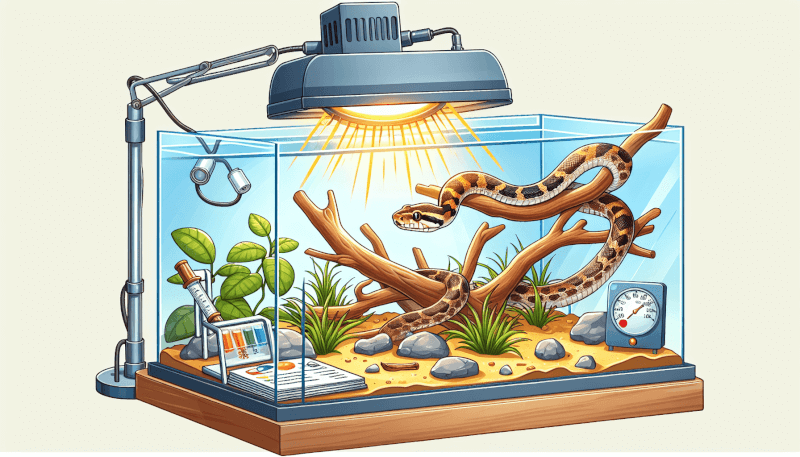Are you a snake owner looking for the best ways to provide UVB lighting for your scaly friend? UVB lighting is crucial for the health and well-being of snakes, as it helps them produce vitamin D3 and absorb calcium properly. In this article, we will explore the various options available to ensure your snake gets the necessary UVB exposure, including different types of UVB bulbs, proper placement, and recommended lighting schedules. With these tips, you can create a happy, healthy environment for your snake to thrive in.

Choosing the Right UVB Lighting for Your Snake
Understanding the Importance of UVB Lighting for Snakes
When it comes to providing the best care for your pet snake, UVB lighting is of utmost importance. UVB rays are essential for snakes as they help in the synthesis of vitamin D3, which is crucial for calcium metabolism and overall bone health. Without proper UVB lighting, snakes may develop metabolic bone disease, leading to deformities, fractures, and other health issues. Therefore, it is essential to choose the right UVB lighting for your snake to ensure its well-being and longevity.
Different Types of UVB Lighting Options
There are various types of UVB lighting options available in the market, each with its own advantages and considerations. One common type is fluorescent UVB bulbs, which emit UVB rays necessary for your snake’s health. These bulbs come in different sizes and strengths, so it’s vital to choose one that matches the size and specific needs of your snake species. Another option is the mercury vapor bulb, which not only produces UVB rays but also provides heat and visible light, simulating the natural sunlight conditions your snake would experience in the wild. LEDs are also becoming popular for UVB lighting, offering energy efficiency and longevity.
Considerations When Choosing UVB Lighting for Your Snake
When selecting UVB lighting for your snake, it’s crucial to consider factors such as the species of your snake, its enclosure size, and its natural habitat requirements. Different snake species have varying UVB lighting needs, and it’s essential to research and understand the specific requirements of your snake beforehand. Additionally, the size and dimensions of the enclosure play a vital role in determining the appropriate UVB lighting setup. Lastly, considering the UVB output and intensity is crucial to ensure your snake receives the correct amount of UVB rays for optimal health.
Installing UVB Lighting in the Snake’s Enclosure
Determining the Placement of UVB Lighting
The placement of UVB lighting in your snake’s enclosure is vital to provide the right exposure to the UVB rays. The ideal placement for UVB lighting is within the enclosure itself, allowing your snake to receive direct exposure to the rays. However, it’s essential to ensure that the lighting is positioned in such a way that your snake cannot come into direct contact with the bulb, as this could cause burns or injuries. Additionally, placing the UVB lighting near the basking spot ensures that your snake receives both warmth and UVB radiation, replicating the natural conditions it would experience in the wild.
Proper Distance and Angles for UVB Lighting
The distance and angles at which the UVB lighting is placed within the enclosure are crucial for providing the right exposure to your snake. Each type of UVB bulb has specific recommendations regarding the optimal distance from the basking spot and the snake’s body. It’s essential to follow these guidelines to ensure your snake receives the appropriate amount of UVB radiation without the risk of overexposure or insufficient exposure. By positioning the UVB lighting at the correct angles, you can create a gradient in the enclosure, allowing your snake to choose its preferred level of UVB exposure.
Securing UVB Lighting in the Enclosure
Properly securing the UVB lighting in your snake’s enclosure is essential to ensure the safety of both your pet and the equipment. Many UVB lighting fixtures come with built-in clips or mounts that can be easily attached to the enclosure’s walls or ceiling. It’s crucial to securely fasten the fixtures to prevent them from falling and potentially harming your snake or causing damage to the enclosure. Additionally, regularly inspecting the fixtures and replacing any worn-out or damaged parts is necessary for the long-term effectiveness of the UVB lighting setup.

Maintaining UVB Lighting for Your Snake
Regularly Check and Replace UVB Bulbs
Regularly checking and replacing UVB bulbs is crucial to maintain the proper functioning of the lighting setup for your snake. Over time, UVB bulbs lose their effectiveness, and their UVB output diminishes. Therefore, it is recommended to replace UVB bulbs every six to twelve months, even if they appear to be working. Keeping a record of the bulb installation date can help ensure timely replacements. It’s also essential to periodically inspect the bulbs for any signs of physical damage or discoloration, as this may indicate the need for immediate replacement.
Monitoring UVB Output and Intensity
Monitoring the UVB output and intensity is essential to ensure that your snake receives adequate exposure to UVB rays. There are special UVB meters available that can accurately measure the output and intensity of the UVB lighting in your snake’s enclosure. It’s advisable to regularly check these measurements to verify that the lighting setup is providing the necessary UVB radiation. Additionally, monitoring your snake’s behavior and health can also provide indications of whether the UVB lighting is optimal. If you notice any changes in your snake’s appetite, activity level, or skin condition, it may be a sign that adjustments to the lighting setup are required.
Cleaning and Maintaining the Enclosure
Maintaining a clean and hygienic enclosure is crucial for the overall well-being of your snake. Regularly cleaning the enclosure, including the areas around the UVB lighting fixtures, ensures that there is no dust or debris buildup obstructing the UVB rays. Additionally, wiping down the UVB bulbs themselves with a clean, soft cloth can help remove any particles that may affect their effectiveness. When cleaning the enclosure, it’s important to ensure that the UVB lighting fixtures are turned off and cooled down to avoid any accidents or burns.

Supplementing UVB Lighting with Natural Sunlight
The Benefits of Natural Sunlight for Snakes
While artificial UVB lighting is crucial for snakes, supplementing it with natural sunlight can provide additional benefits. Natural sunlight provides a broader spectrum of UV rays that artificial bulbs may not fully replicate. Exposing your snake to natural sunlight helps in the production of vitamin D3 while promoting natural behaviors and overall well-being. Furthermore, natural sunlight can have a positive impact on your snake’s appetite, activity levels, and skin coloration. As long as proper precautions are taken, natural sunlight can be a valuable addition to your snake’s UVB lighting regimen.
Outdoor Exposure Guidelines
When considering outdoor exposure for your snake, certain guidelines should be followed to ensure its safety and well-being. It’s important to choose an appropriate outdoor area that is secure, free from predators, and has suitable temperatures for your snake’s species. Avoid exposing your snake to direct sunlight for extended periods, as this may lead to overheating or sunburns. Instead, provide your snake with areas of shade within the outdoor enclosure to seek respite from the sun when needed. Always supervise your snake during outdoor exposure and be mindful of sudden weather changes or potential hazards that may arise.
Acclimating Snakes to Outdoor Sunlight
Before exposing your snake to prolonged outdoor sunlight, it’s essential to acclimate them gradually to avoid any stress or health issues. Start by exposing your snake to short durations of outdoor sunlight, gradually increasing the time over several weeks. Allow your snake to explore the outdoor enclosure at its own pace, ensuring it has access to shaded areas. Observe your snake’s behavior and monitor any signs of discomfort or stress during the acclimation process. If your snake shows any adverse reactions, such as excessive hiding, increased aggression, or abnormal behaviors, it may be necessary to consult with a herpetologist or reptile veterinarian for guidance.

Common Mistakes to Avoid with UVB Lighting
Using Incorrect UVB Lighting Intensity or Spectrum
One common mistake many snake owners make is incorrectly choosing the UVB lighting intensity or spectrum for their pets. Each snake species has specific UVB requirements, and using a bulb with the wrong intensity or spectrum can lead to health issues. It’s essential to research and understand the specific needs of your snake species and choose UVB lighting accordingly. Consulting with a herpetologist or reptile veterinarian can provide valuable guidance in determining the correct UVB lighting setup for your snake.
Neglecting to Provide a Proper Basking Spot
Snakes require a designated basking spot within their enclosure to regulate their body temperature effectively. This basking spot should be positioned near the UVB lighting and provide a temperature gradient, allowing your snake to choose its preferred temperature level. Neglecting to provide a proper basking spot may result in your snake not being able to thermoregulate correctly, leading to compromised health and behavior. Ensure that the basking spot is adequately heated and includes appropriate substrates or surfaces for your snake to rest on comfortably.
Overexposing or Underexposing Snakes to UVB Lighting
Finding the right balance in UVB exposure is crucial for your snake’s health. Overexposure to UVB rays can lead to sunburns, eye damage, and thermal stress. On the other hand, underexposure can result in vitamin D3 deficiency and metabolic bone disease. It’s vital to follow the manufacturer’s guidelines for the recommended distance, duration, and intensity of UVB exposure. By monitoring your snake’s behavior and health, you can make adjustments to the UVB lighting setup if necessary to ensure it receives the appropriate level of exposure.

Final Tips for Providing UVB Lighting to Your Snake
Consulting with a Herpetologist or Reptile Veterinarian
If you ever have any doubts or concerns regarding UVB lighting for your snake, it’s always best to consult with a herpetologist or reptile veterinarian. These professionals have extensive knowledge and experience in reptile care and can provide valuable advice tailored to your snake’s specific needs. They can help assess your current UVB lighting setup, offer recommendations for improvements, and address any other questions you may have regarding your snake’s overall well-being.
Monitoring Your Snake’s Behavior and Health
As a responsible snake owner, it’s important to observe and monitor your snake’s behavior and health regularly. Changes in appetite, activity level, shedding patterns, and overall appearance can indicate potential issues with the UVB lighting or other aspects of your snake’s care. Keeping a record of these observations can help you track any changes over time and provide valuable information to share with your herpetologist or reptile veterinarian during check-ups.
Regularly Educating Yourself about Reptile Lighting
The field of reptile lighting is continually evolving, and new research and advancements occur regularly. It’s essential to stay informed and educated about the latest findings and recommendations in reptile lighting. Joining reptile forums or communities, subscribing to reputable reptile care publications, and attending reptile expos or workshops can provide valuable insights and keep you updated on best practices for providing UVB lighting to your snake. By staying informed, you can ensure that you are providing the best possible care for your scaly friend.


